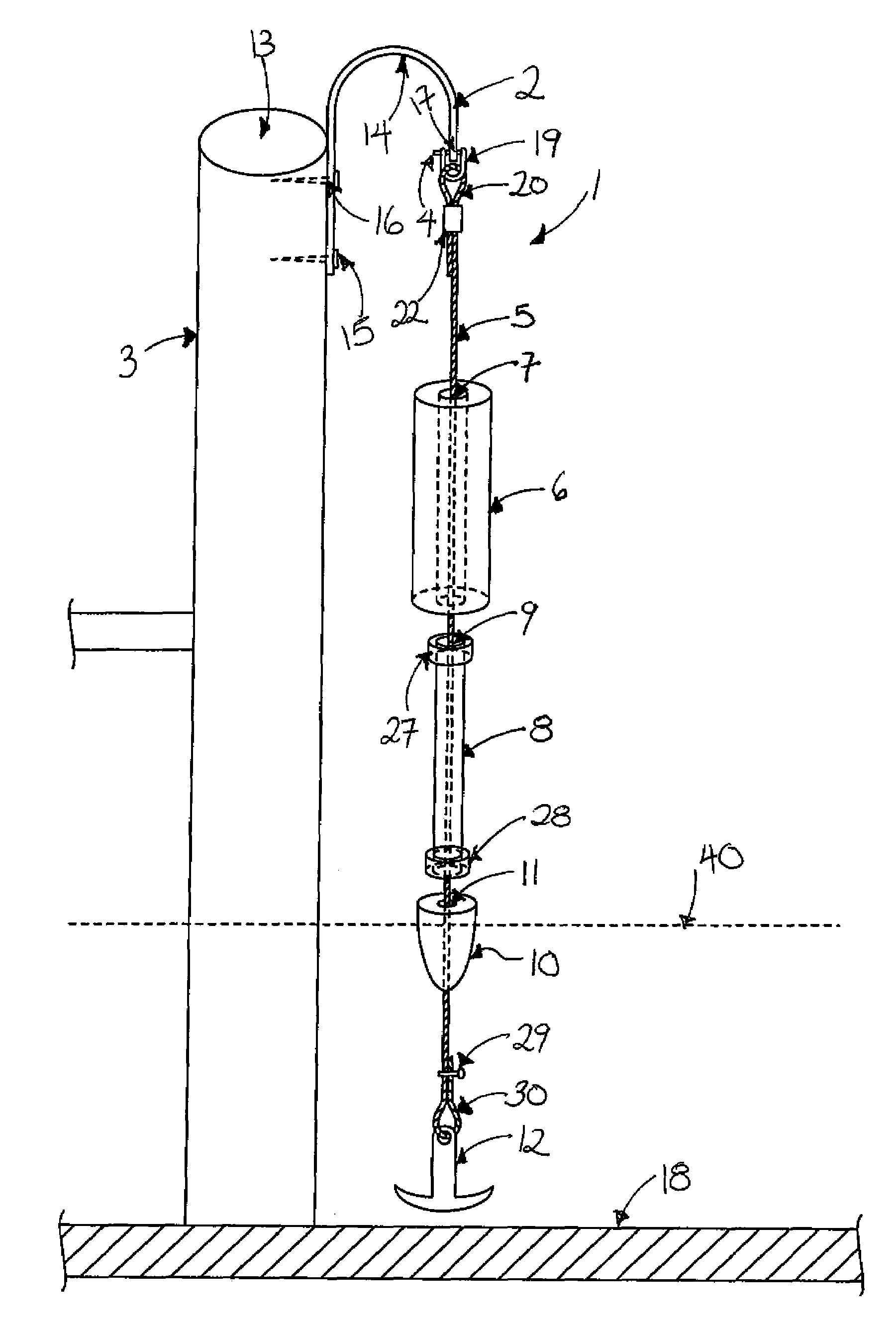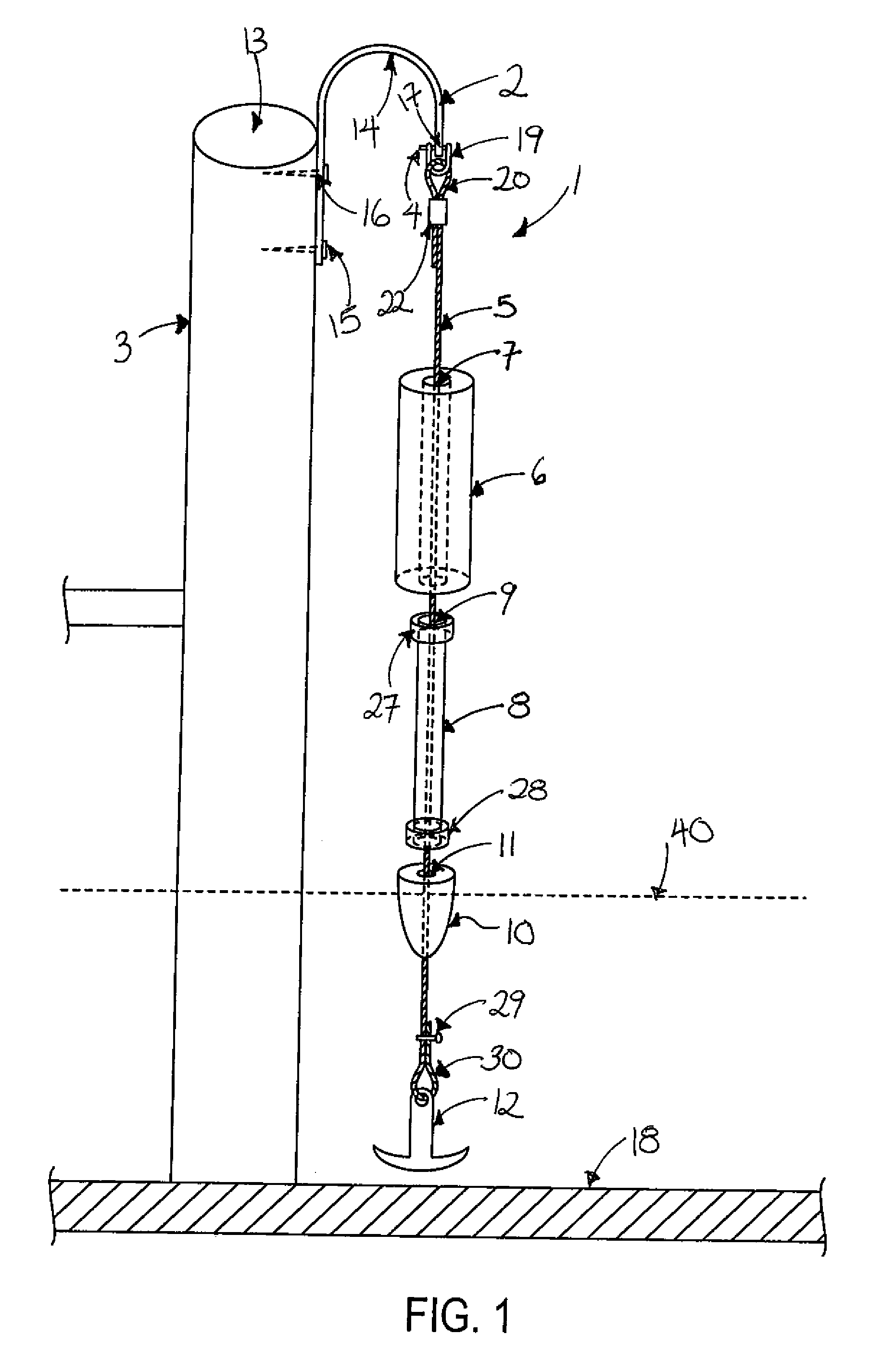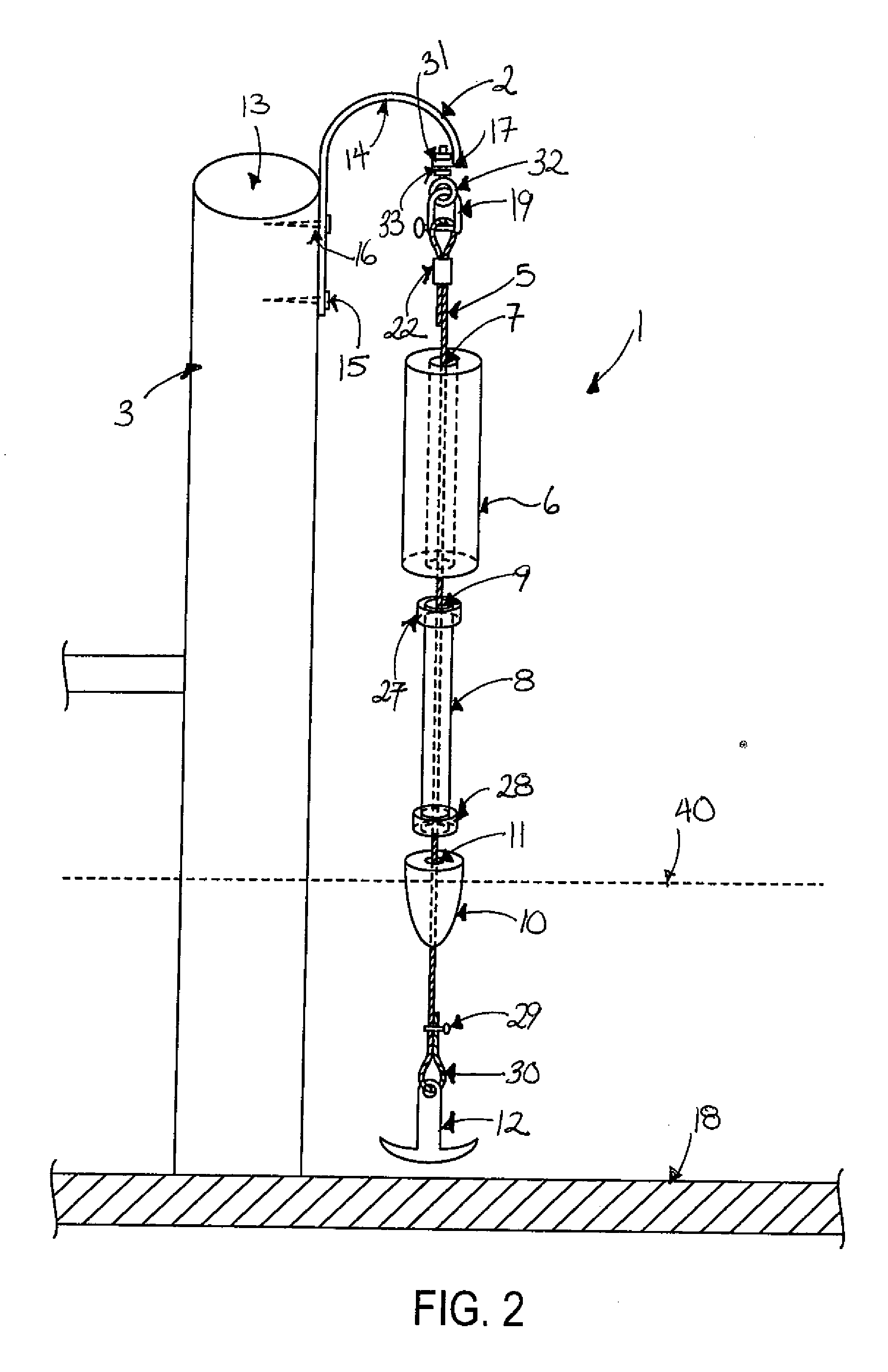Fender System for Vessels Which Allows Fenders to Self Adjust
a fender system and fenders technology, applied in the field of fenders, can solve the problems of ineffective bumpers, vessel may even work itself under the dock, and cannot withstand the full force of an impact between the vessel, so as to reduce the chance of damaging the vessel or the dock, and prevent damage to the marine vessel
- Summary
- Abstract
- Description
- Claims
- Application Information
AI Technical Summary
Benefits of technology
Problems solved by technology
Method used
Image
Examples
Embodiment Construction
[0023]For a better understanding of the present invention, reference may be made to the following detailed description taken in conjunction with the appended claims and the accompanying drawings.
[0024]Referring to FIG. 1, the fender system 1 of the present invention is generally comprised of a bracket 2 that is affixed to a vertical dock piling 3, a mechanical means 4 that attaches a cable 5 to the bracket 2, a fender 6 with a vertical hole 7 for passage of the cable 5 there through, a pipe 8 just below the fender 6 having a vertical hole 9 for passage of the cable 5 there through, a float 10 for providing the buoyancy for the fender 6 and having a vertical hole 11 for passage of the cable 5, and a weight 12 that is attached to the terminating end of the cable 5.
[0025]In a preferred embodiment, the fender system 1 includes a bracket 2 that is attached at one end to a vertical dock piling 3 near the top 13 of the dock piling in order for the fender system 1 to operate along the entir...
PUM
 Login to View More
Login to View More Abstract
Description
Claims
Application Information
 Login to View More
Login to View More - R&D
- Intellectual Property
- Life Sciences
- Materials
- Tech Scout
- Unparalleled Data Quality
- Higher Quality Content
- 60% Fewer Hallucinations
Browse by: Latest US Patents, China's latest patents, Technical Efficacy Thesaurus, Application Domain, Technology Topic, Popular Technical Reports.
© 2025 PatSnap. All rights reserved.Legal|Privacy policy|Modern Slavery Act Transparency Statement|Sitemap|About US| Contact US: help@patsnap.com



